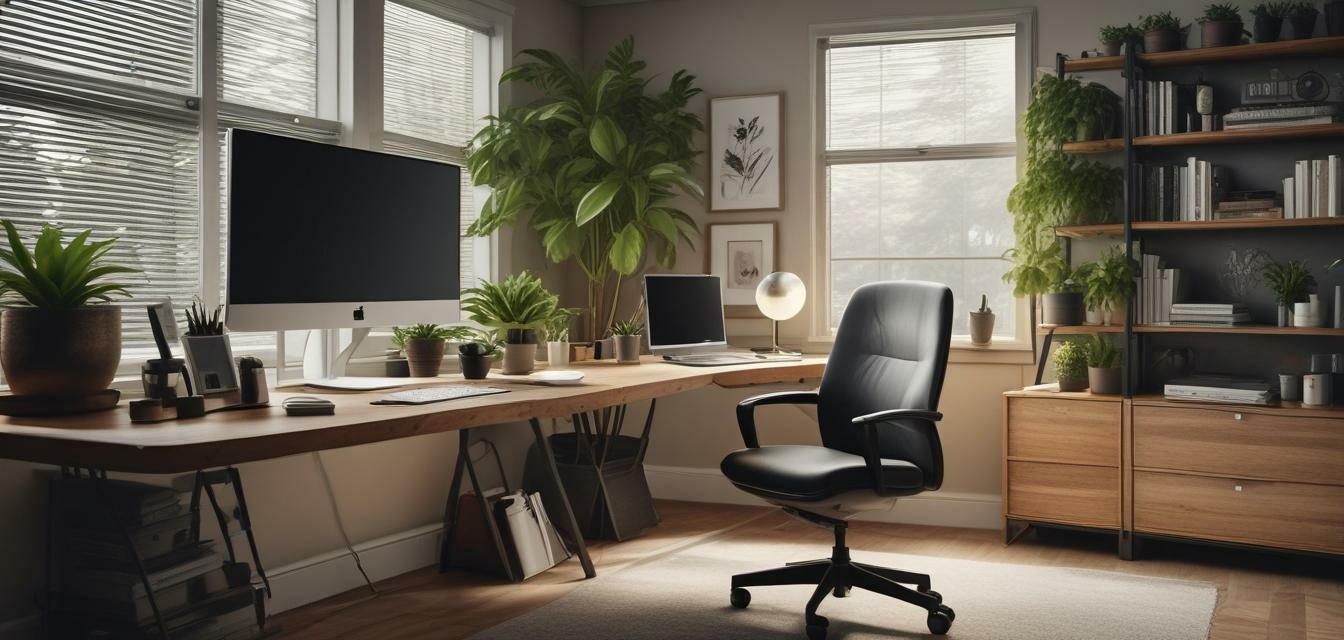
Incorporating plants into your home office design
Key Takeaways
- Plants enhance aesthetics and bring vitality to your workspace.
- Choose low-maintenance plants for easy integration.
- Consider plant placement for optimal light and space use.
- Incorporating plants can improve air quality and mood.
- Use decorative pots and stands to elevate style.
Creating a productive home office isn't just about the tech and furniture you choose—it also involves enhancing your workspace with natural elements such as plants. Incorporating plants into your home office design can foster a refreshing environment, improve your well-being, and boost productivity. In this article, we explore various creative ways to blend plants into your workspace, from choosing the right types to thoughtful placement and styling tips.
Benefits of incorporating plants into your home office
| Benefit | Description |
|---|---|
| Improved Air Quality | Plants help filter toxins and purify the air, creating a healthier environment. |
| Enhanced Mood | Greenery can boost mood and reduce stress, making you more productive. |
| Aesthetics | Plants add beauty and life to your workspace, making it more inviting. |
| Noise Reduction | Plants can help absorb sounds, creating a quieter workspace. |
Choosing the right plants
Not all plants are suited for an office environment. You want to choose ones that are easy to maintain and thrive indoors. Here are some popular options:
- Snake Plant: Tolerates neglect and low light conditions.
- Pothos: Grows quickly, can survive in low light, and purifies the air.
- Spider Plant: Known for its easy care and air-purifying abilities.
- ZZ Plant: Requires very little water and thrives in low-light settings.
- Peace Lily: Beautiful flowers and great at improving indoor air quality.
Creative placement ideas
Where you place your plants can make a significant difference in both aesthetics and practicality. Here are some strategies:
- On your desk: Small plants such as succulents or cacti can add a touch of green without taking too much space.
- On shelves: Use higher shelves to display taller plants or hanging plants for a dynamic visual effect.
- In corners: Larger plants like Fiddle Leaf Figs can fill empty corners, adding height and interest.
- Near windows: Position plants where they'll receive natural light, which helps them thrive.
- Using plant stands: Elevate smaller plants with stylish stands to draw attention and create levels.
Designing your layout
Incorporating plants into your overall design can create a cohesive look. Consider these tips when designing your layout:
| Design Element | Traditional Office | Plant-Integrated Office |
|---|---|---|
| Desk Type | Sleek with minimal décor | Incorporates plants for texture and color |
| Chairs | Standard ergonomic chair | Natural materials with greenery nearby |
| Wall Color | Neutral palette | Earthy tones with hanging plants |
| Lighting | Standard task lighting | Accent lighting highlighting plants |
Maintaining your plants
Once you've selected and placed your plants, maintaining them is crucial. Here are some general tips:
Tips for beginners
- Check light requirements: Ensure plants get appropriate light based on their needs.
- Water wisely: Over-watering is a common mistake; ensure pots have drainage.
- Dust leaves: Dust can accumulate, so clean the leaves with a damp cloth to help them breathe.
- Fertilize: Use a balanced fertilizer during the growing season to encourage growth.
Final thoughts
Incorporating plants into your home office design not only enhances the visual appeal but also creates a more enjoyable and productive workspace. By selecting the right plants and thoughtfully placing them, you can transform your office environment into a haven that encourages creativity and well-being. For more ideas on creating an inspiring workspace, feel free to explore our other articles in the Setup Inspiration section or check out our Desk Lamps and Lighting for perfect lighting to complement your plants.
Pros
- Enhances aesthetics and ambiance.
- Improves mood and reduces stress.
- Can purify indoor air.
- Acts as a natural sound absorber.
Cons
- Requires maintenance and care.
- Some plants may be toxic to pets.
- Can take up desk or floor space.
- Growth requirements vary widely.